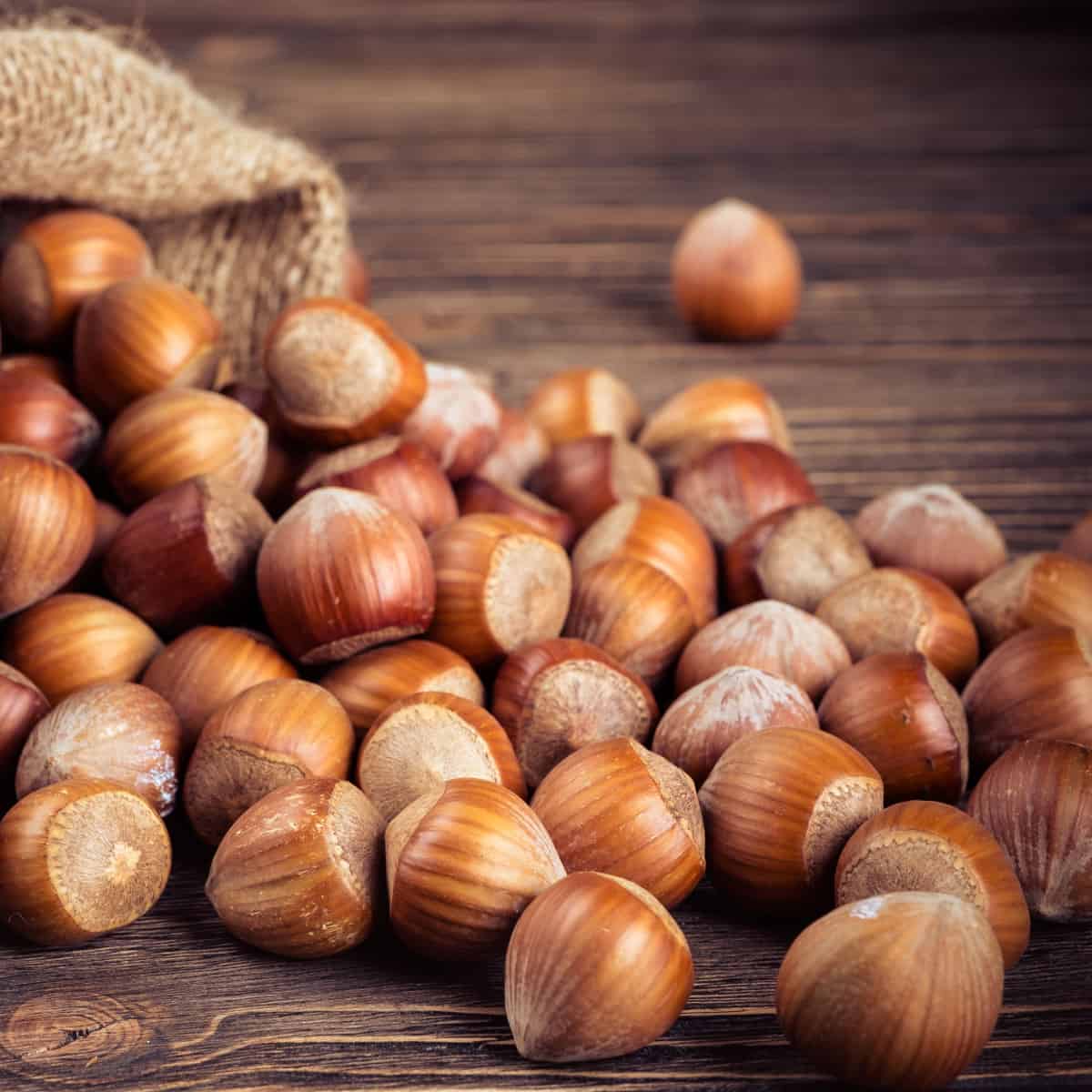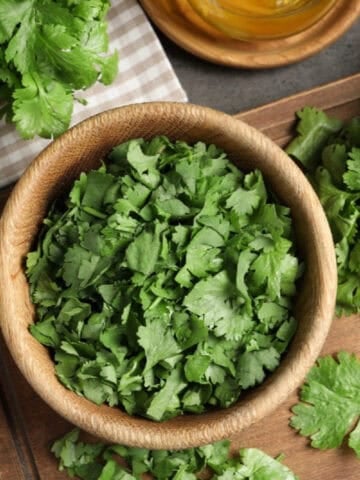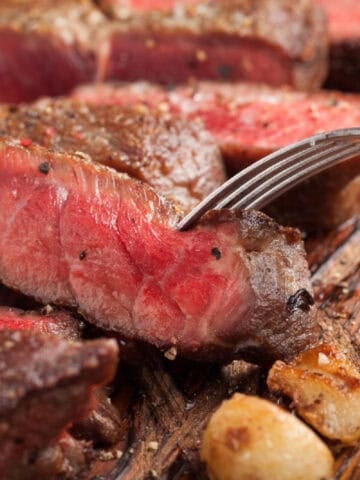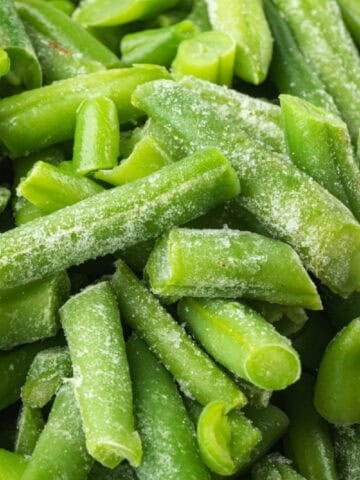Chestnut vs hazelnut? Chestnut and hazelnut may seem similar at first, but many key differences between them make them unique in their own way. Read on to explore the distinguishing features of these edible nuts in terms of appearance, flavor, nutrition, and more.

Jump To
Chestnut vs hazelnut – Overview
Both chestnuts and hazelnuts have gained popularity across the globe. Unique flavor and versatility are the key characteristics of chestnuts that make them a delicious addition to many cuisines. On the other hand, Hazelnuts are loved for their distinct flavor and multiple culinary applications. The origins of chestnuts date back to prehistoric times in the Northern Hemisphere's temperate regions. They were traditionally a staple food in many cultures, particularly in Asia and Europe. Chestnut trees thrive in acidic, well-drained soil under temperate climate conditions.
On the other hand, hazelnuts have been enjoyed for centuries and are believed to have originated in the Mediterranean region. Hazelnut trees are found and cultivated across various regions. Turkey is known to be the largest producer of Hazelnuts.
The following are key factors that differentiate these versatile nuts:
Appearance and identification

Chestnuts have a rounded, shiny brown shell with a pointy tip. The shell is often adorned with fine, distinct lines that radiate from the tip to the base, enhancing its visual appeal. Their outer hard shell is relatively thick and provides a protective layer for the nut. On the other hand, hazelnuts have a smaller, oval-shaped shell with a brown color. The shell is relatively thin and smooth. This makes it easier to crack open to access the nut inside. Hazelnut shells also have a slightly ridged texture which gives them a unique appearance.
Taste and texture
Chestnuts are known for their mild, sweet taste and subtle earthy flavor. When cooked, their flavor profile becomes more distinct as they develop a delicate, satisfying, and comforting nuttiness. The unique taste of horse chestnut can be compared to a combination of slightly sweetened bread and roasted potatoes. In terms of texture, raw chestnuts have a starchy composition.
On the other hand, hazelnuts have a distinct taste and texture profile. They have a slightly rich, sweet flavor with a hint of bitterness. Their taste can be described as nutty and toasty. In terms of texture, hazelnuts are known for their crunchy and firm consistency. This type of nut provides a delightful texture contrast when used in sweet and savory dishes.
Flavor and aroma

When roasted, chestnuts emit an inviting and warm fragrance that fills the air. The aroma of roasted chestnuts is often associated with the cozy atmosphere of the holiday season in the winter months. In terms of flavor, fresh chestnuts have a naturally sweet taste that develops during roasting. On the other hand, hazelnuts boast a robust, nutty flavor with a slightly sweet profile. When roasted, they release an aromatic fragrance that is often described as slightly chocolatey and toasty. Their flavor is indulgent and rich with a subtle bitter taste that adds depth to their profile.
Nutrition and health benefits
Both of these tree nuts are low glycemic index foods. They feature various amino acids and great overall nutritional value. Edible chestnut is great for weight loss purposes. This is because it has fewer calories and is lower in fat than other nuts. It is also naturally cholesterol-free and contains minimal amounts of saturated fat. Chestnuts primarily consist of carbohydrates and provide a good source of dietary fiber, which aids digestion and regulates blood sugar levels.
In terms of vitamins and mineral content, chestnuts offer several essential nutrients. They are particularly rich in vitamin C, which is beneficial for immune system function and acts as an antioxidant in the body. American chestnut also provides essential minerals such as copper and potassium.
Hazelnuts are higher in fat than chestnuts, but most of their fat content comes from heart-healthy monounsaturated fats and fatty acids. These fats have many health benefits, including lowering the risk of heart disease. Hazelnuts are also a good dietary fiber source promoting a healthy digestive system. Their vitamin E content is their key nutritional aspect. Vitamin E is a powerful antioxidant that supports immune function, helps protect cells from damage caused by free radicals, helps maintain healthy skin, and more. These nutritious nuts are also a good source of vitamin B. Essential minerals that American hazelnuts provide include copper and magnesium.
Which one is the more popular nut? Chestnut or hazelnut?
The popularity of nuts can vary depending on the region, cultural preferences, and culinary traditions. However, hazelnuts (also known as filberts) are generally more widely recognized and consumed globally than chestnuts.
Hazelnuts have gained popularity due to their delicious flavor, versatility, and use in various culinary applications. They are commonly used in desserts, such as chocolates, cakes, and pastries, as well as in savory dishes like salads and roasted vegetables. Also, hazelnuts are widely used in spreads like Nutella, further contributing to their popularity.
On the other hand, chestnuts are also well-known and enjoyed, but their popularity tends to be more seasonal and region-specific. Roasted chestnuts are especially popular during the winter months in many countries, particularly in Europe and North America. They are often sold as a seasonal treat on the streets during the holiday season. Chestnuts are also used in various recipes like stuffing, soups, and desserts, but their consumption is more concentrated in certain cultures.
In summary, while chestnuts and hazelnuts have their devoted fans, hazelnuts have a broader global appeal. They are generally considered more popular due to their versatile use and year-round availability in various culinary dishes.
What is the best way to cook chestnut and hazelnut?
Cooking chestnuts and hazelnuts can bring out their delicious flavors and aromas. Here are some of the best ways to cook each nut:

Cooking chestnuts:
- Roasting: Roasting chestnuts is a classic and popular method. To do this, make a small slit on the flat side of each chestnut (this prevents them from exploding during roasting). Place the chestnuts on a baking sheet and roast them in the oven at 400°F (200°C) for about 20-30 minutes or until the shell starts to open and the inner nut is tender. Once done, let them cool slightly before peeling off the outer shell and inner skin.
- Boiling: Boiling chestnuts is another common method, especially if you use them in recipes like soups or stuffing. Make a small slit on each chestnut and add it to a boiling pot. Boil for about 15-20 minutes or until they become tender. After boiling, peel off the shell and inner skin while still warm.
Cooking hazelnuts:

- Roasting: Roasting hazelnuts enhances their flavor and makes it easier to remove the skin. Spread the hazelnuts in a single layer on a baking sheet and roast them in the oven at 350°F (175°C) for 10-15 minutes. Keep an eye on them to avoid burning. Once roasted, let them cool for a few minutes, then transfer them to a clean kitchen towel. Rub the towel over the hazelnuts to remove the skin.
- Pan Roasting: Alternatively, roast hazelnuts in a dry skillet over medium heat, stirring frequently to ensure even toasting. This method may take slightly less time than roasting in the oven.
- Blanching: If you prefer to remove the skin of hazelnuts without roasting, you can blanch them. Boil the hazelnuts in water for about 3-5 minutes. Drain the hot water, and immediately transfer the hazelnuts into a bowl of ice water. The quick temperature change will make the skins easier to remove.
Once you have roasted or boiled hazelnuts and peeled off the skin (if desired), you can use them in various recipes, such as baked goods, salads, desserts, or even as a topping for oatmeal or yogurt.
Store any leftover roasted nuts in an airtight container to keep them fresh and flavorful.
How to store chestnut and hazelnut?
Proper storage is essential to maintain the freshness and quality of both chestnuts and hazelnuts. Here are some guidelines on how to store each nut:
Storing chestnuts:
- Fresh chestnuts: If you have purchased fresh, uncooked chestnuts, it's best to store them in the refrigerator to keep them from drying out and spoiling. Place the chestnuts in a perforated plastic bag or a container with ventilation holes to allow some air circulation. The crisper drawer of your refrigerator is an ideal spot.
- Cooked chestnuts: If you've cooked more chestnuts than needed and want to store the leftovers, let them cool completely, then transfer them to an airtight container. Keep the container in the refrigerator for up to 3-4 days.
- Freezing: If you have a large quantity of chestnuts and plan to use some of them within a few days, you can freeze them for longer-term storage. First, blanch the chestnuts by boiling them for a few minutes, then drain and let them cool. Peel off the shells and inner skin if you still need to. Place the blanched, peeled chestnuts in an airtight freezer bag or container and store them in the freezer for up to 6 months.
Storing hazelnuts:
- Whole hazelnuts: If you have unroasted and unpeeled hazelnuts, store them in a cool, dry place away from sunlight and moisture. A pantry or kitchen cupboard is suitable for short-term storage, but for longer storage, you can place them in an airtight container and keep them in the refrigerator or freezer.
- Roasted and peeled hazelnuts: Once you've roasted hazelnuts and removed the skin, store them in an airtight container. Keeping them in the refrigerator will help preserve their freshness and prevent them from turning rancid due to their higher fat content.
- Freezing: To extend the shelf life of hazelnuts, you can freeze them. Place the raw, unroasted hazelnuts in an airtight container or freezer bag, and store them in the freezer for up to 1 year. If you have roasted and peeled hazelnuts, freezing them similarly can also extend their shelf life.
Always make sure that the containers you use for storage are airtight to prevent moisture and air from affecting the nuts. Additionally, label the containers with the date to keep track of their freshness, especially if you store them in the freezer for an extended period.
Conclusion
Overall, there is no clear winner when it comes to chestnut vs hazelnut. Both types of nuts offer unique characteristics. They are healthy snack choices that feature distinct textures and flavors. The choice between the two ultimately comes down to personal preferences and culinary uses. Whether you prefer the starchy creaminess of chestnuts or the rich crunch of hazelnuts, these tasty nuts can add a delightful touch to your meals. I hope you enjoyed this post. Let me know what you think by leaving a comment below.:)





Leave a Reply